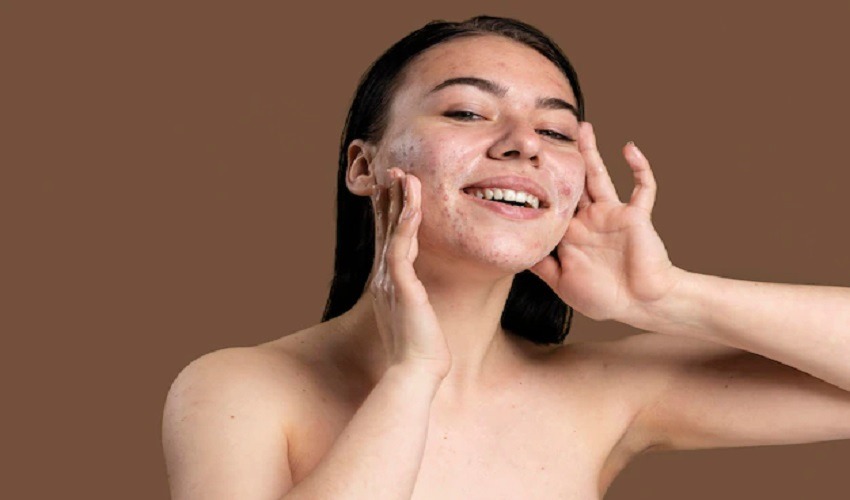Back when you were a teenager, did you suffer from acne scars, skin allergies, and post-inflammatory hyperpigmentation? If so, you likely tried a variety of therapies, but you were never able to discover one that worked for you.
Due to science and technology’s significant breakthroughs, you don’t need to worry about anything. You can get rid of your post-inflammatory hyperpigmentation (PIH) by going to any treatment facility in a short amount of time.
In this article, I will give tips on getting rid of the problem you’re having with your face. Make sure that you read it through to the end.
A Brief Intro To Your Condition
Post-inflammatory hyperpigmentation, also called PIH, is a problem that often results from several skin diseases and treatments. This excess of pigment can be attributed to several preceding disease processes that affect the skin, including infections, allergic reactions, mechanical injuries, reactions to medications, phototoxic eruptions, trauma such as burns, and inflammatory diseases.
What causes PIH?
After an inflammatory response, changes to the skin’s normal pigmentation brought on by inflammatory conditions like acne, dermatitis, insect bites, and the like give rise to hyper-pigmentation. Lesions cause hyperpigmentation because the skin’s natural pigment, melanin, is made in large amounts as the wound heals.
The cause and location of the mark(s) can determine how it looks. Most of the time, the discolouration seems more profound than it would on normal skin. It could be a darker brown, blue, or even grey. Tags of skin are usually flat, brown or black and can be found anywhere on the body. This is because when the skin is injured or inflamed, the body responds by producing more of the pigment melanin.
Round or irregularly shaped hyperpigmentation can also take the form of patches. Post-inflammatory hyperpigmentation always stands out against the skin’s natural tone.
Treating Your PIH
There are two approaches to therapy from which you can select one to treat your condition. Either treat it yourself at home or go to your dermatologist and ask them what the best treatment is.
Here is a list of treatments that can be acquired over the counter or at a clinic.
Treatment You Can Use at Home
Salicylic Acid
Inflammation, such as that caused by acne, can result in the production of significant levels of melanin, which in turn causes pigmentation. The beta-hydroxy acid, known as salicylic acid, is an effective acne treatment and helps reduce the appearance of pigmentation. It has an exfoliating effect, which removes pigmented dead skin cells and helps rejuvenate old skin simultaneously.
In addition to that, it inhibits the growth of microorganisms. Additionally, this can impede or completely halt the production of melanin. Patients with lighter skin tones may also experience the benefits.
Hydroquinone
This bleaching agent, found effective in Pigmentation Topical Creams, is a component that lightens any dark spots on the skin, hence achieving lighter skin tones. The number of melanocytes responsible for creating melanin (the skin’s natural pigment) decreases, resulting in the desired effect. There is only one topical lotion available called Tri-Luma, comprising powerful chemicals and 4% hydroquinone.
Remember to use sunscreen and other forms of sun protection regularly and apply these creams to inhibit the development of melanin as part of your skincare routine to minimise the effects of UV radiation (UV rays).
Clinical Treatments
Chemical Peels
In most cases, glycolic acid or salicylic acid is utilised in this treatment. This helps exfoliate the top layers of the skin, revealing healthier and lighter skin. It works well for stimulating the turnover of skin cells and making the skin seem better overall.
Chemical peels can be divided into three categories: superficial, medium, and deep. Peels that are only superficial penetrate the epidermis, the very top layer of the skin, but do not affect the deeper layers. Deep peels are the most severe variety and can reach deeper layers of skin, while medium-depth peels are excellent for treating age spots, actinic keratoses, and freckles. Medium-depth peels can also penetrate further into the skin than deep peels.
This treatment is effective because it reacts to the surface layers of the skin and dissolves skin cells that are damaged or pigmented, thereby revealing healthier skin that is located deeper down. The patient can feel a tingling sensation while the treatment is being administered, but this feeling should go away once the solution has been neutralised. As a deeper peel goes deeper into the skin and is more active, it may be necessary to use a numbing lotion during the procedure.
Chemical peels for hyperpigmentation can be purchased in Singapore for a starting price of $150.
Pico laser
The Pico Laser breaks down the extra melanin, which allows the skin to absorb the treatment and clean away any pigmented spots. Because it has a concise pulse duration of 450 picoseconds, the method is significantly less likely to cause thermal damage to the skin than is the case with conventional lasers.
Pigments are fragmented into smaller pieces due to the high strength and highly brief pulse length that is utilised. Because the method gets rid of pigmentation faster than other treatments, fewer treatment sessions are needed.
The Pico Laser is 90% more effective and has a greater working rate than the above therapies. You may need anywhere from five to ten treatments to successfully eliminate the pigmentation that has been targeted.
As with all treatments, the Pico Laser may cause moderate side effects, such as itching or a reddish flush to the skin, but these effects disappear after a few hours. You might feel some warm little pricks during the operation, but most patients can endure them.
You can immediately return to work following a Pico Laser Treatment; however, it is recommended that you limit the amount of time spent in direct sunlight to prevent hyperpigmentation.
You can anticipate an improvement of more than 90 percent in the appearance of your black spots using Pico Laser in conjunction with the other treatments described above.
Starting at $150, the price of a Pico Laser treatment for hyperpigmentation in Singapore.
This anti-inflammatory treatment is suitable for individuals with darker skin types and people with PIE and PIH and can be administered non-invasively in the doctor’s office. There is minimal downtime associated with this treatment.
Final Thoughts
Post-inflammatory hyperpigmentation is the dark spots on the skin that stay after a pimple has gone away. Because it doesn’t harm the skin, no pits or raised scars will result from using it. Acne-related PIH can be treated using a variety of different methods. Getting in touch with a specialist is crucial for the most remarkable outcomes.






